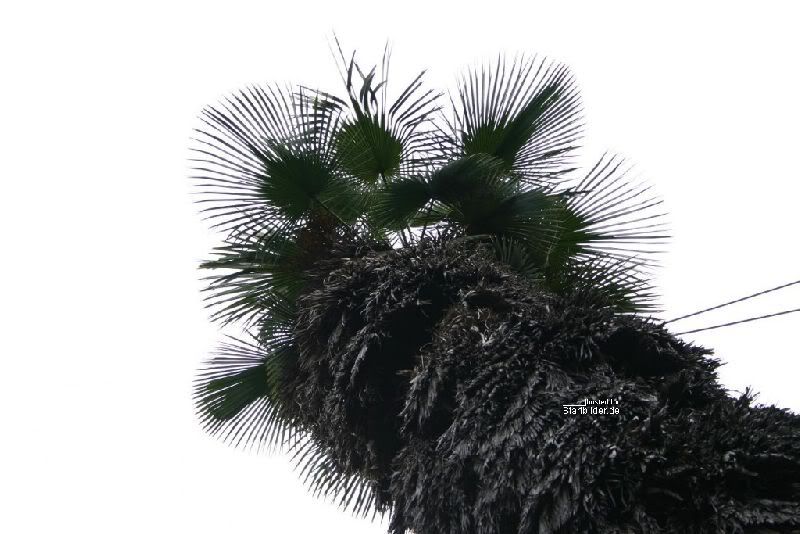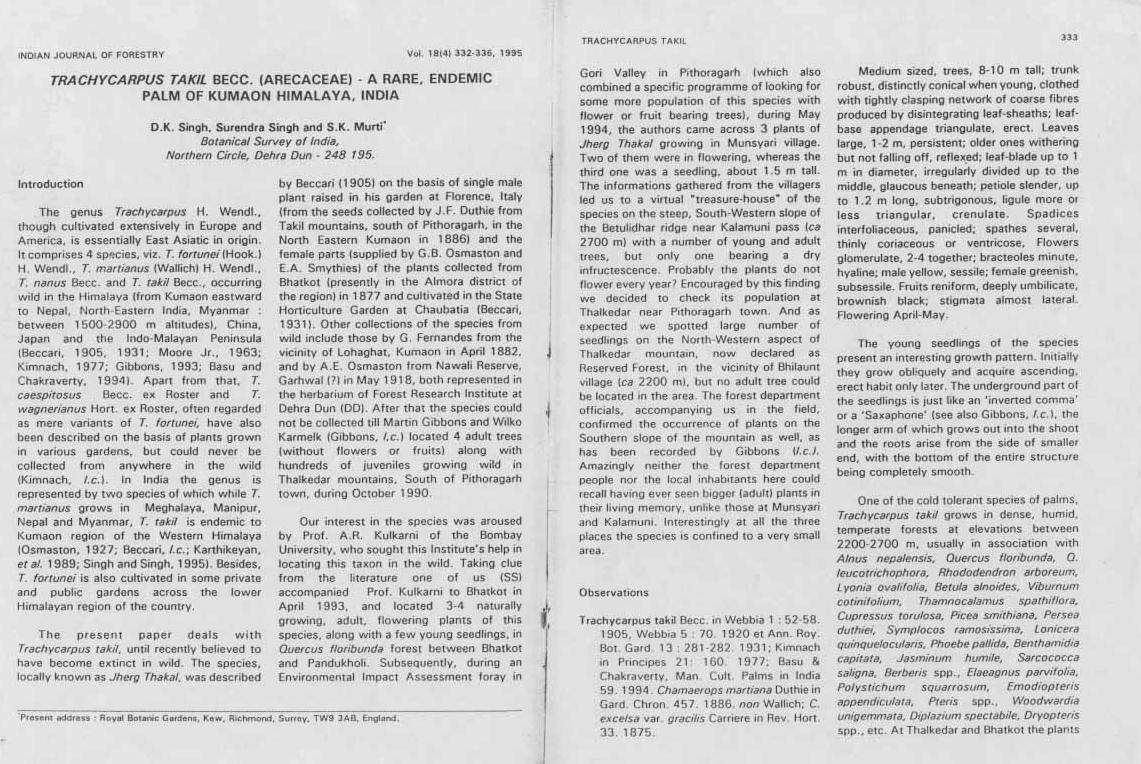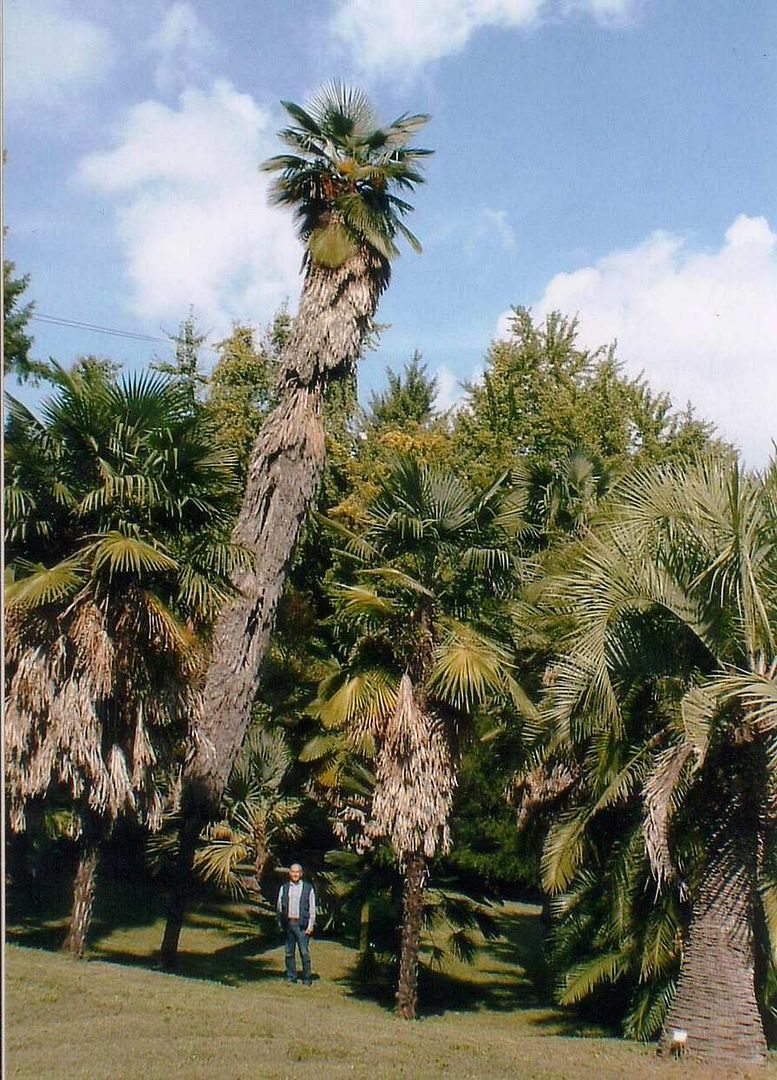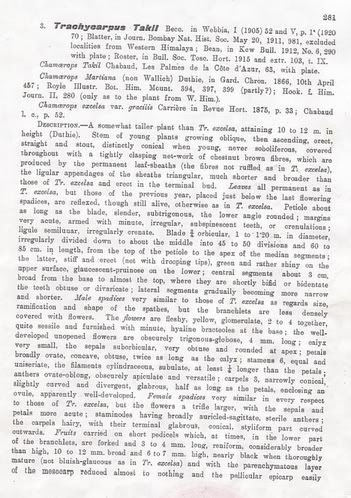That pic was taken in Rome and it show the only ture Takil that exists in Europe or elsewhere outside of India.
it was grown from seeds by the italian Botanist O. Beccari in 1887 who reportedly got the seeds from Mt. Takil (Thalkedar) in Kumoan, india.
All other Takils grown from the original batch of seeds died during harsh winters in Florence, Italy. Only this specimen in Rome survived because it is much warmer in Rome.
This picture also poves that Takil do not have bare trunks and keep the fibres and even the old leaves for their whole life span.
I have no takil in my garden und in my view the takils grown from seeds coming to Europe since 1994 are different from what Beccari described and show leaves typical for fortunei.
They also lack other Beccarian takil traits except for the creeping habit when young. But this is a habit which takil shares with most of the Trachycarpus species, including many fortuneis (not all).
But let´s get back to the asymetric Hastula which we were told was a typical Takil trait.
Now look at this:
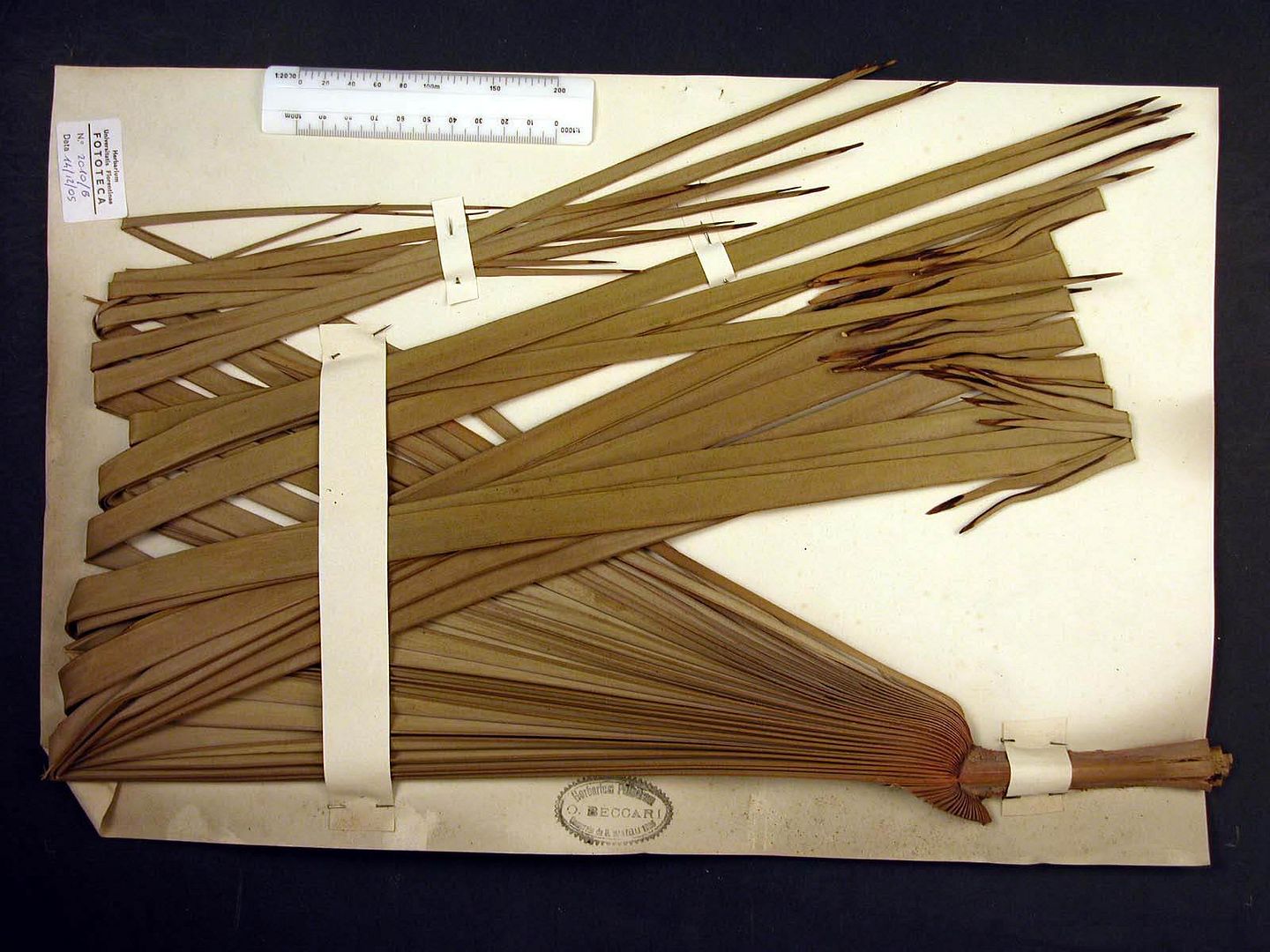
I have just received this picture from the Universtity of Florence where the orignal herbaric specimens of the takil are being stored.
it shows the rachis of one of the leaves taken from THAT VERY TAKIL SPECIMEN that Beccari used for his description of that species in 1905.
This Rachis (the backside of the Hastula) is very regular and so the hastula is. It is NOT ASYMETRIC and therefore the adymetric hstual CANNOT BE a true and reliable Takil trait.
Beccari had several takils grown from the seeds from Kumaon but none of these plants ever showed this sort of hastula.





